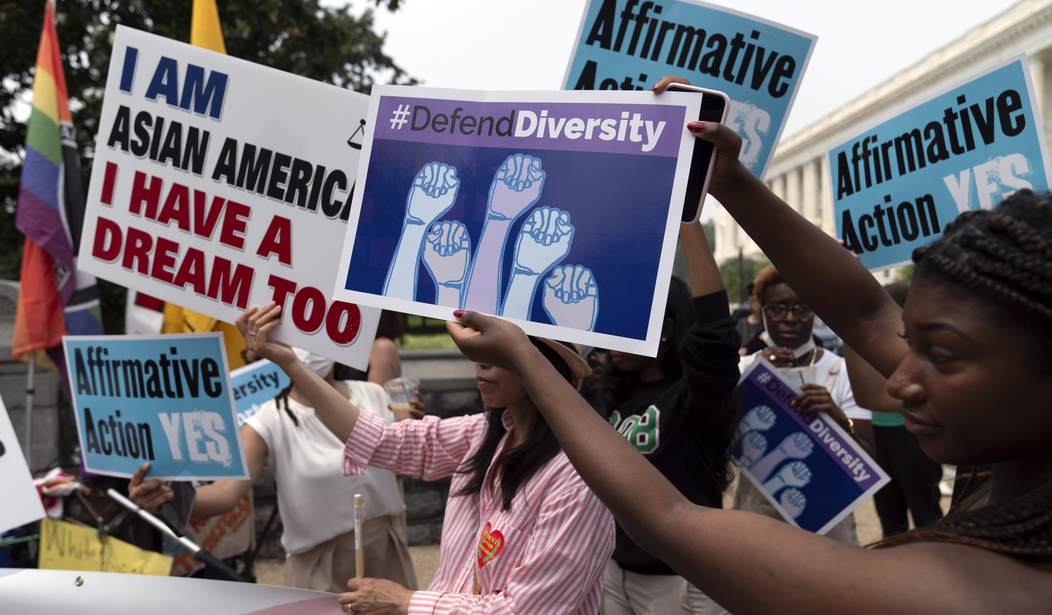The notion of color-blindness derives from the principle that moral persons of conscience should disregard race in judging their fellow human beings. It is a sincere aspiration but not necessarily meant as a description of reality. It was once considered a non-controversial mainstay of the American ethos.
No longer. The term “color-blind” has become an object of scorn among America’s elite. The usual crowd directing our national groupthink has determined that proclaiming color-blindness is intentionally deceptive, simply a cheap cover for racism.
Thus Critical Race Theory guru Ibram X. Kendi informs us that the most threatening racist movement is not the “alt-right’s drive for a White ethnostate but the regular American’s desire for a race-neutral one.” Best selling author Robin DiAngelo claims that the color-blind strategy boils down to “pretend we don’t see race and racism will end.”
One critic alleges that color blindness was “developed in the neo-conservative think tanks during the 1970s.” Another condemns color blindness as “part of a long-standing whiteness protection program, associated with indigenous dispossession, colonial conquest, slavery, segregation, and immigrant exclusion.”
It’s not clear where these professors acquired their bizarre claims, but the historical record tells a far different story. The ideal of color-blindness was not birthed in some loony right wing outpost but was the philosophical basis of the fight against slavery. As author Coleman Hughes points out, color-blindness was the driving passion of civil rights leaders from Frederick Douglass to Martin Luther King.
Recommended
Wendell Phillips, known as “abolition’s golden trumpet”, called in 1865 for the “creation of a government color-blind” in which all laws referencing race would be repealed. Later, the idea of color-blindness was the inspiration for the battle against Jim Crow.
In the 1896 Supreme Court case Plessy v. Ferguson, which affirmed the discredited “separate but equal“ doctrine, the lone dissent was from Justice John Marshall Harlan. His declaration still rings through the ages that “our constitution is color-blind and neither knows nor tolerates classes among its citizens.”
When then-NAACP attorney Thurgood Marshall, later a Supreme Court Justice, argued segregation cases in the courts, he often referred to the Plessy dissent. “Our constitution is color-blind” became the mantra of the National Association for the Advancement of Colored People.
Color-blindness in the 1940s was the first demand of the original March on Washington, which successfully pressured FDR to integrate the defense industry. Color-blindness was also the first argument made in the NAACP’s appellate brief supporting the Brown v. Board decision, which finally reversed the Plessy decision in the 50s.
Americans sometimes forget how much progress was made when color-blindness was the guiding principle driving racial progress. By the 1950s, America was clearly lifting itself out of its deeply racist past. Economic opportunities for blacks were burgeoning. Black families and churches were strong. A solid black middle class was forming while black professionals and political leaders became more common.
So what happened? How did we end up with a race-drenched public life where “systemic racism” is considered the accepted explanation for just about everything bad that happens. Award-winning public intellectuals teach that the races are inherently different and that treating individuals differently based on race is not only acceptable but desirable.
Citizens grounded in the philosophy of individual liberty are difficult for a centralized government to control. The Marxist-inspired left clearly wants Americans to identify as members of an oppressed group, be it race, gender or sexual orientation.
Life’s failures and disappointments can then be blamed on racism, even where none is readily apparent, and used to stoke racial resentments. Any successes or achievements are attributed not to individual merit or diligence but to the privileges bestowed on favored groups by the government.
Ward Connerly, a leader in the anti-affirmative action movement, tells critics “I don’t care what color you are. Do you care what color I am?” That simple question may be the key to a brighter racial future.
Americans must decide if we really want to turn away from our Enlightenment based notions of racial equality and once again embrace sanctioned racism. We will never achieve a society in which race really doesn’t matter if we can’t agree on the most basic principle of all— absolute equality granted by the Creator.
























Join the conversation as a VIP Member